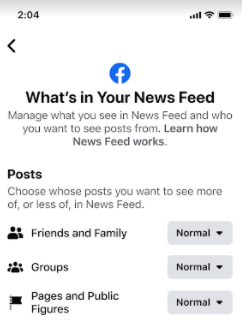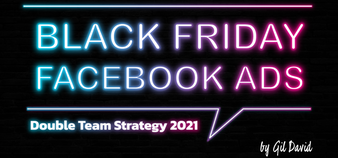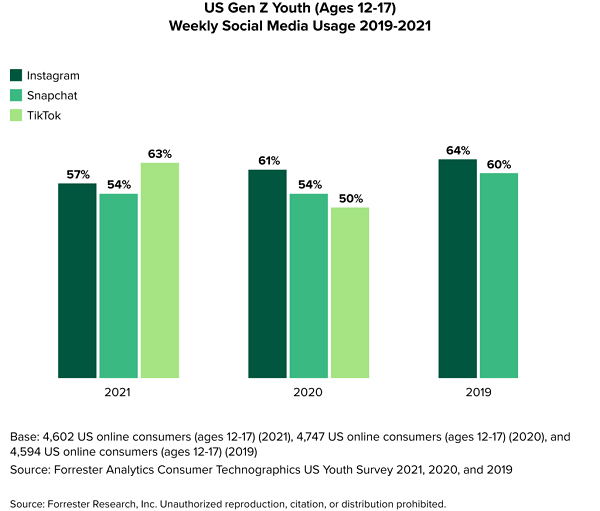Facebook's Change Will Slash Your Organic Reach. (Again.)
Today In Digital Marketing is a daily podcast showcasing the latest in marketing trends and updates. This week, Tod touches on:
FACEBOOK: Get Ready for **Even Lower** Organic Reach
WEB CONTENT: The AMP Format Is Cancelled
MEDIA BUYING: Gil David's Black Friday Campaign Resource
TIKTOK: It Really Is Destroying Instagram
RETAIL: The March Toward Cashier-Free Stores Continues
MEDIA BUYING: Spotify — the Asshole in the Podcast Room
Below is the transcription from this weeks topics
FACEBOOK: Get Ready for **Even Lower** Organic Reach
In a move that will surprise nobody who is a regular reader of this newsletter, Meta announced yesterday that they have found a way to cut organic reach on their platform to even lower levels than it is today.
This is in the form of a toggle switch they're giving to some users which will let them indicate they want to see fewer posts in their news feeds from brand pages or groups.
The test is live now for some users — it adds three menus:
Friends and family
Groups
Pages and public figures
Users will be able to change the ratio of what's in their feed by changing these to More, Normal, or Less.
I don't think you need to be a psychic to realize that a large number of people will say "more family" and "less brand pages," please. And that will reduce our organic reach, meaning if you want to connect with your existing fanbase, you'll need to buy ads.
The test is with a small group of people now but Meta says they'll be expanding it in the coming weeks.
WEB CONTENT: The AMP Format Is Cancelled
A number of years ago, before web pages were mobile-friendly, Google was pushing a new type of page format — Accelerated Mobile Pages, or "AMP" for short.
These were duplicate pages of content on your web site that would only be served to people on mobile devices, and only under certain circumstances. You didn't need to manually create this second version; most content management systems like Wordpress offered plugins that would do it for you, slap your branding on it, and put it up on your server.
Google liked these because they loaded faster, and they highlighted these pages with a little lightning bolt icon in the search results.
Since then, web content has evolved, and now the HTML that underlies web pages accounts for mobile views automatically and serves a version of the same page that just adapts to the screen size. We call these responsive pages, and pretty much all web sites use responsive themes now.
So what's happening with AMP?
It looks like it's going away.
Twitter this week confirmed it plans to drop support for the format by the end of the year and when that happens, they'll just stop redirecting people to whatever AMP pages you have on your server. To be clear — people won't get 404 errors, they'll just see your regular web pages now, which —hopefully— you have made responsive.
And Twitter's not alone.
Quoting SearchEngineJournal:
It’s getting harder to make a case for publishing pages in the AMP format, especially after what’s happened with it over the past year.
Google itself is gradually phasing AMP out of a number of places where it was once prominent.
With the launch of the Page Experience Update, Google made a number of changes that suggest it’s dropping support for AMP — though not completely.
Google’s first move toward phasing out AMP was removing the lightning bolt icon from search results.
That made pages published in the format less obvious, but didn’t stop them from ranking in Google.
Later, Google removed AMP as a requirement for appearing in the Top Stories carousel.
The pages were not removed from the carousel, but they’ll now appear alongside regular HTML pages.
Google’s most recent step toward phasing out AMP occurred this past September, when the company announced it would show non-AMP content more regularly in Google News.
So what to do if you have an AMP plugin — nothing, if you don't want. It doesn't hurt anything having the plugin churning out copies. Google won't consider them duplicate content. But these days, there's really not much point having them around.
MEDIA BUYING: Gil David's Black Friday Campaign Resource
One of the people who pops up in my Twitter feed regularly is Gil David — he runs a boutique Facebook ads agency in Ireland called Run DMG .
He's always tweeting great advice on ad campaigns on the platform — you can follow him at @gil_rundmg
This week I noticed he's put out a pretty comprehensive resource for Black Friday campaigns:
Still finalizing your Black Friday ad setup? Got all your offers and ads ready to go but not sure where to start? Here is the main setup I will be using for our clients this year based on over $30m in ad spend and 7 years' experience running Facebook Ads as well as the success of the same strategy last year, ADAPTED and updated now to account for iOS14.5. This could be the best money you spend this whole BFCM! You will get:
Detailed breakdown of setup for each campaign with audiences, exclusions and other recommendations
Guidance on what budget splits to deploy
Tips on scaling to max out revenue from your sale
Some essential post-iOS14.5 pitfalls to beware of!
A simplified setup for brands spending <500 a day over the sale period
PLUS Limited time bonus section for anyone paying £10+ Top Audience Ideas
Gil says the content is worth thousands (and I don't think he's wrong) but he's putting it online at whatever price you want to pay — even as low as £1.
Check it out at b.link/facebookblackfriday
(P.S. This was not paid; we don't get a cut, I just thought it was a pretty solid resource.)
TIKTOK: It Really Is Destroying Instagram
Meta CEO Mark Zuckerberg's obsessive infatuation with increasing the young-people demographic on his platform can be summarized in two words: TikTok. (I guess that's one word.)
And new numbers from Forrester show exactly why he's panicking.
The study was of 4,600 teenagers in the US:
TikTok's weekly usage was up 13 points year-over-year
Instagram: down 4 points
Also, Snapchat has closed the gap to just 3% points difference between it and Instagram
So how did TikTok sneak up so fast on the Zuck?
One reason: They lost their super-secret spy tool.
Meta’s usual approach to such challengers has been to first try to buy them out before they get too big, but that process was, at least in part, based on its controversial Onavo VPN monitoring program which helped it track key app trends as they rose. Meta was forced to shut down the Onavo tracking program in January 2019 due to its intrusive nature, which saw it essentially gathering data on app usage from many teens, and paying them a small fee for providing such access. Upon discovery of the program, Apple banned Onavo from the App Store for violating its policies, before Meta closed the program for good in response to a TechCrunch investigation.
That reduced Meta’s insight into rising trends, which seems to have left the company more vulnerable to competition from TikTok...
As a result, Meta then moved to phase two of its competitor mitigation playbook - replication – with the launch of Instagram Reels...
As for WHY teens are on TikTok rather than Instagram, Forrester found many consider TikTok to just be more fun and a more positive experience.
All that said, neither TikTok nor Instagram are at the top of the US teen chart — that belongs to YouTube, with 72% of American teens using it weekly.
RETAIL: The March Toward Cashier-Free Stores Continues
Among the many retail trends happening these days is that of cashierless checkouts — the most famous of which is probably Amazon's experiment with its own tiny grocery stores where cameras watch what you put into your cart, letting you just walk out the store and get billed for it all later.
Now, Amazon has teamed up with Starbucks to try it out on coffee drinkers.
The test store has been given a predictably Frankenstein brand name — Starbucks Pickup with Amazon Go — it's in New York and opened yesterday. It's got a lounge with workspaces and expanded tables with power outlets and USB ports.
It's not a pop-up, by the way. This offers the full Starbucks menu and an assortment of food and beverages, although that cooler has been given its own name: The Amazon Go market.
Customers will order on the Starbucks app then just walk in, grab their drink, and leave.
Starbucks says if it works out, they'll open more next year.
A study last year found that more than a third of consumers found cashierless options appealing because of their shorter lines, and another third said they like it because they don't like talking to other people.
MEDIA BUYING: Spotify — the Asshole in the Podcast Room
An update now on the Spotify ad campaign I told you I launched yesterday. Well, tried to launch.
Here's how it went — and I'm sure this will sound disturbingly familiar. First, after a couple of hours, my ads were approved.
They were both the same ad, but I had two different ad sets.
Then, later last night, one of the ads was rejected. Remember, there were two ads in this campaign only because there were two ad sets. The ads themselves were identical.
But only one was rejected.
And why? The policy it said I violated was:
Ads referencing competitor music or podcast services are prohibited. Remove any references to Spotify competitors from your ad and/or clickthrough URL landing page.
"What Spotify competitors," you ask?
Apparently, my use of the phrase "or wherever you get your podcasts" was what they got their panties in a twist about.
Yes, my landing page does acknowledge the existence of other podcast platforms — bigger platforms, better platforms.
But, like the North Korean information ministry, Spotify does not want its users to know that better options exist in the world.
This doesn't explain, though, why only ONE of the ads was rejected and the other was approved. Just another day for an online media buyer, I guess.
Between this nonsense and them buying podcasts up only to hide them behind paywalls, one thing is clear:
Spotify doesn't want to participate in the podcast community.
It wants to own it.
And that's not good for anybody.
Credit to Tod Maffin and the Today In Digital Marketing podcast, Produced by engageQ.com




